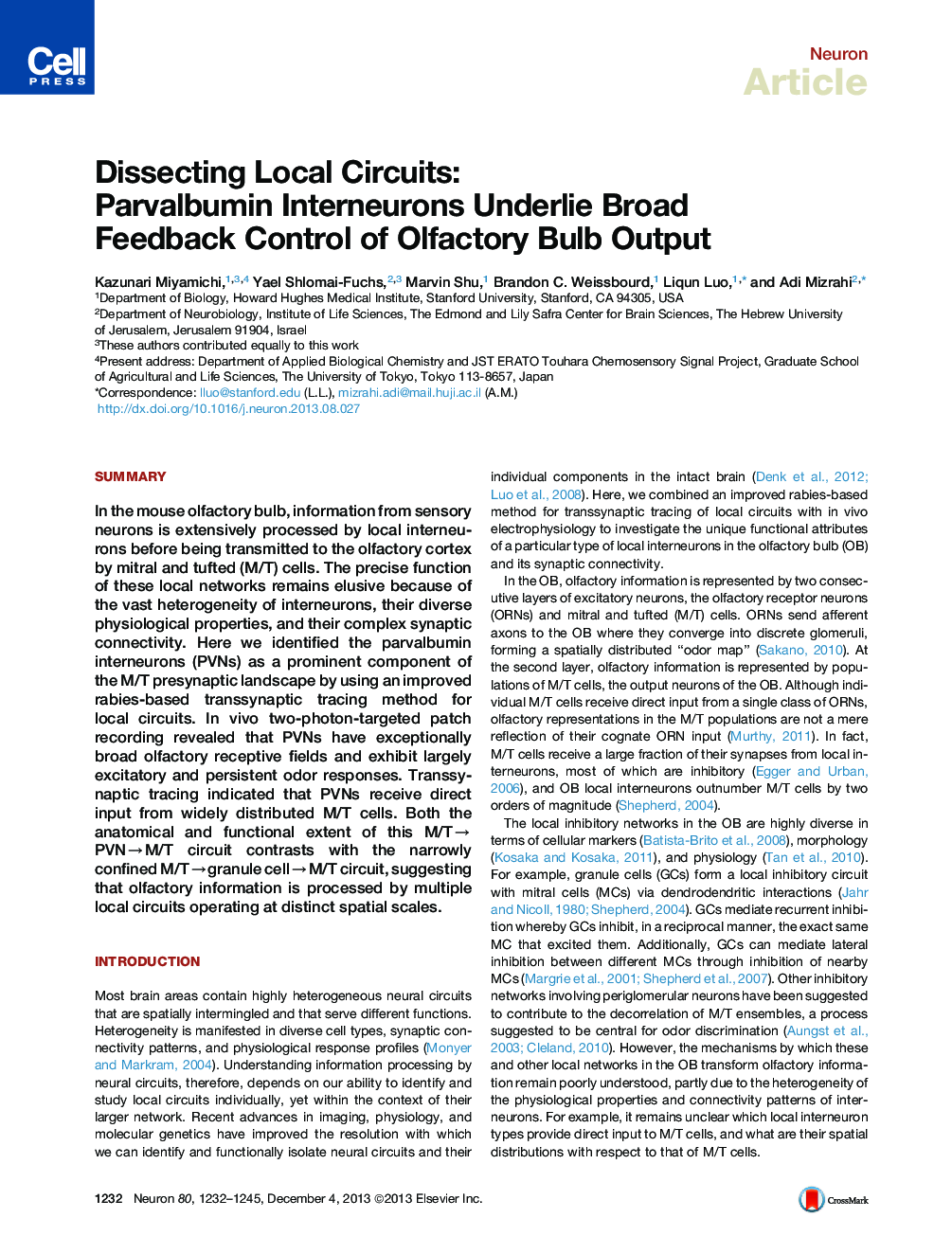| Article ID | Journal | Published Year | Pages | File Type |
|---|---|---|---|---|
| 4321281 | Neuron | 2013 | 14 Pages |
•An improved method for transsynaptic tracing of local circuits•Parvalbumin interneurons (PVNs) are dominant presynaptic partners of mitral cells•PVNs are widely responsive to odors with unique physiological signatures•A mitral cell→PVN→mitral cell circuit provides broad feedback control of OB output
SummaryIn the mouse olfactory bulb, information from sensory neurons is extensively processed by local interneurons before being transmitted to the olfactory cortex by mitral and tufted (M/T) cells. The precise function of these local networks remains elusive because of the vast heterogeneity of interneurons, their diverse physiological properties, and their complex synaptic connectivity. Here we identified the parvalbumin interneurons (PVNs) as a prominent component of the M/T presynaptic landscape by using an improved rabies-based transsynaptic tracing method for local circuits. In vivo two-photon-targeted patch recording revealed that PVNs have exceptionally broad olfactory receptive fields and exhibit largely excitatory and persistent odor responses. Transsynaptic tracing indicated that PVNs receive direct input from widely distributed M/T cells. Both the anatomical and functional extent of this M/T→PVN→M/T circuit contrasts with the narrowly confined M/T→granule cell→M/T circuit, suggesting that olfactory information is processed by multiple local circuits operating at distinct spatial scales.
